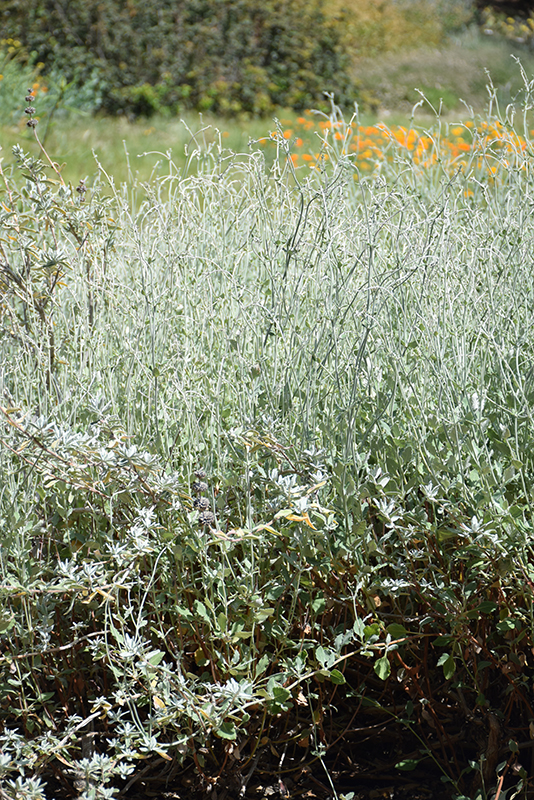Ashyleaf Buckwheat - New For 2025!
Eriogonum cinereum
Height: 24 inches
Spread: 3 feet
Sunlight:
![]()
![]()
Hardiness Zone: 9
Other Names: Coastal Buckwheat
Description:
A tough, attractive mounded plant for use in low maintenance landscaping or xeriscaping; a native shrub featuring silvery gray leaves and light pinkish-white flowers in summer, persisting for a long time; excellent for coastal gardens and naturalizing
Ornamental Features
Ashyleaf Buckwheat features showy clusters of shell pink star-shaped flowers with white overtones rising above the foliage from late spring to early fall. The flowers are excellent for cutting. It has attractive grayish green foliage with hints of silver. The small fuzzy oval leaves are highly ornamental and remain grayish green throughout the winter. The silver stems can be quite attractive.
Landscape Attributes
Ashyleaf Buckwheat is an open multi-stemmed evergreen shrub with a mounded form. Its relatively fine texture sets it apart from other landscape plants with less refined foliage.
This is a relatively low maintenance shrub, and should only be pruned after flowering to avoid removing any of the current season's flowers. It is a good choice for attracting birds, bees and butterflies to your yard. Gardeners should be aware of the following characteristic(s) that may warrant special consideration;
- Self-Seeding
Ashyleaf Buckwheat is recommended for the following landscape applications;
- Mass Planting
- Rock/Alpine Gardens
- General Garden Use
- Groundcover
- Naturalizing And Woodland Gardens
Planting & Growing
Ashyleaf Buckwheat will grow to be about 24 inches tall at maturity, with a spread of 3 feet. It tends to fill out right to the ground and therefore doesn't necessarily require facer plants in front. It grows at a fast rate, and under ideal conditions can be expected to live for approximately 20 years.
This shrub does best in full sun to partial shade. It prefers dry to average moisture levels with very well-drained soil, and will often die in standing water. It is considered to be drought-tolerant, and thus makes an ideal choice for a low-water garden or xeriscape application. This plant does not require much in the way of fertilizing once established. It is not particular as to soil pH, but grows best in poor soils, and is able to handle environmental salt. It is highly tolerant of urban pollution and will even thrive in inner city environments. This species is native to parts of North America..







